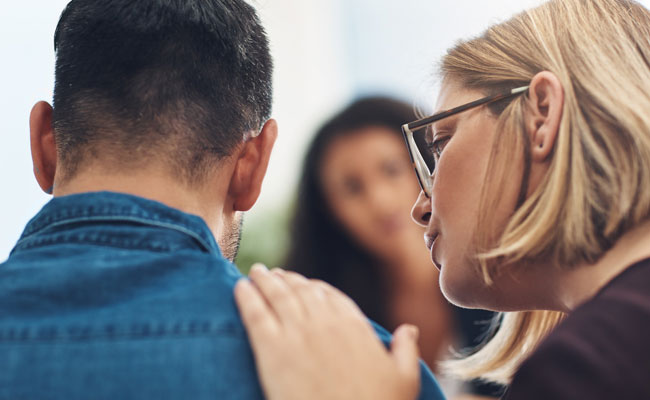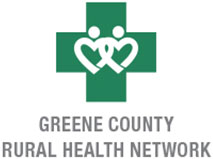According to the NYS Department of Health, in 2021, Greene County had the second highest opioid overdose death rate out of 57 upstate counties and the highest death rate for overdoses involving heroin. To reduce overdose deaths and improve the health of our community, the Public Health Department is implementing a new confidential system where residents can request free Harm Reduction Supplies.
Stigma can cause damage to your loved ones AND if it continues, the opioid crisis will continue also.
This is Tiana’s story. Watch the video to learn about Tiana’s struggle with addiction and how the stigma around her addiction played a part in her recovery. Stop the shame. Stop the blame. Stop the stigma.
Stigma is defined as a set of negative beliefs that a group or society holds about a topic or group of people. When a person experiences stigma they are seen as “less than” because of their real or perceived health status. Stigma is rarely based on facts but rather on assumptions and generalizations. For example, many people believe that addiction to opioids is the result of a personal failing; that people choose the disorder, or they lack the willpower or character to control their substance use. Stigma results in prejudices, avoidance, rejection and discrimination.
People who experience stigma regarding their opioid abuse are less likely to seek treatment which will only prolong the opioid epidemic. In the United States, the cost of untreated addiction is often steep and the physical, financial, societal and personal repercussions are all significant.
Impact of Stigma
Stigma hurts everyone by creating more fear or anger toward ordinary people. Anyone can become addicted to opioids. It could be your next-door neighbor, a relative, a friend, or you. Addiction doesn’t discriminate, it doesn’t depend upon your income, job, age, race, or education.
Instead of focusing on the disease of opioid addiction, stigmatized individuals may experience:
- Isolation
- Depression/Anxiety
- Public embarrassment
- Rejection
- Getting denied healthcare, education, housing or employment
- Verbal Abuse/Physical Violence
- Continued opioid use (to cope with other people’s negative attitudes and their own feelings)
Do Your Part and Help Fight Back Against Stigma
People report perceived stigma from doctors, family and community members. In order to encourage people to seek help, it is important to reduce the stigma.


Effective ways for individuals to help reduce stigma include:
- Realizing a person’s addiction is a brain disorder, a chronic disease.
- Recognizing that people do not choose addiction. The addiction chose them.
- Offering compassionate support.
- Displaying kindness to people in vulnerable situations.
- Listening while withholding judgment.
- Seeing a person for who they are, not what drugs they use.
- Doing your research; learning about drug dependency and how it works.
- Replacing negative attitudes with evidence-based facts.
What If Your Loved One Relapses?
According to drugabuse.gov, relapse is a reality for an estimated 40 to 60 percent of people in recovery. With relapses being so common, especially during the first year of recovery, it is important to not add any fuel to the stigma surrounding it. The person who has relapsed may already feel they have failed themselves and their family. They are often times overcome with guilt and shame. When a family member has relapsed, it is important to hold off on your reactions because what the person needs is understanding and support, not ridicule.
How we respond to someone who has relapsed is critical. The negative consequences are already obvious to them. Instead of berating the person who has stumbled, why not assure them of their value as a human being who is deserving of support.

What are opioids and what causes an opioid addiction?
Opioids are medicines that are prescribed by a doctor to help relieve pain. Opioids work by lowering the number of pain signals your body sends to your brain. They also change how your brain responds to pain. When used correctly, opioids are safe, but when misused, addiction can occur.
Addiction is a chronic brain disease. Opioid drugs alter your brain by blocking pain and creating artificial endorphins that make you feel good. Too much opioid use can cause your brain to rely on these artificial endorphins and stop producing its own. Over time your body gets used to this effect (or addicted to it) and you may need a higher dose to get the same effect and the same amount of pain relief.
Opioid addiction is a chronic disease characterized by a powerful, compulsive urge to use opioid drugs, even when they are no longer required medically. This disease is no different than other chronic diseases such as cancer, diabetes or heart disease. Opioid addiction can cause life-threatening health problems, including the risk of overdose.
STIGMATIZING LANGUAGE
Addict
Addicted to X
Addiction
Alcoholic
Clean
Clean screen
Dirty
Dirty screen
Drug habit
Drug abuser
Reformed addict or alcoholic
Opioid replacement
PREFERRED LANGUAGE
Person with a substance use disorder
Has a X use disorder
Substance use disorder
Person suffering from alcohol addiction
In recovery
Substance free
Actively using
Testing positive for substance use
Regular substance use
Person who uses drugs
Person in recovery
Medication assisted treatment





